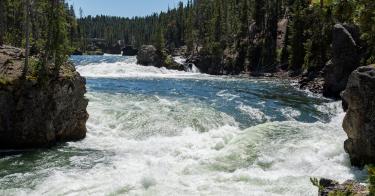For decades, there has been major confusion regarding what waters are regulated under the Clean Water Act.
The United States Supreme Court can change this by agreeing to hear a case brought by the Pacific Legal Foundation. In its petition asking the court to hear the case, Sackett v. Environmental Protection Agency, the Pacific Legal Foundation presents a simple question: Should Rapanos v. United States be revisited to adopt the plurality opinion’s standard for regulated wetlands?
In 2006, the late Justice Antonin Scalia in Rapanos provided much-needed clarity on what waters are covered under the Clean Water Act, and specifically what waters, including wetlands, should be considered “waters of the United States” (informally known as WOTUS) under the Clean Water Act. This definition is extremely important because it clarifies what waters the EPA and the U.S. Army Corps of Engineers have jurisdiction over under the law.
Unfortunately, Scalia’s opinion in Rapanos was a plurality opinion, not getting the necessary five votes for a majority. As a result, the Supreme Court wasn’t able to provide the clarity it could have 15 years ago.
Now the Supreme Court gets a chance to fix this. And it is something that definitely needs to be fixed.
Private property owners remain confused as to what waters are regulated because the EPA and the U.S. Army Corps of Engineers have been all over the place when it comes to defining WOTUS.
This isn’t a new phenomenon. The Rapanos case, like Solid Waste Agency of Northern Cook County v. United States Army Corps of Engineers, just five years earlier in 2001, focused on overreaching federal efforts to try and regulate waters. In both cases, the Supreme Court struck down the overreach.
Since 2015, there have been four different WOTUS regulatory proposals. In 2015, there was the Obama administration’s Clean Water Rule. The Trump administration rightfully repealed that rule and recodified regulations that existed before the 2015 rule (regulations that were also a mess), until it finalized its own WOTUS rule. In 2020, the Trump administration finalized the Navigable Waters Protection Rule.
In December, the Biden administration proposed another rule, which it has said is just temporary until it comes out with its own WOTUS rule. This “temporary” rule didn’t simply recodify the already confusing regulatory text before the 2015 rule, but, making things even more complicated, it is in fact a new rule altogether. As the Biden administration explains, this temporary rule is “updated to reflect consideration of Supreme Court decisions.”
But figuring out what it means to properly reflect Supreme Court decisions is a fundamental question, one in which the agencies across administrations have been unable to properly address, based on court opinions. There’s no reason to think anything will be different for the Biden administration.
In fact, given the Biden administration’s likely expansive interpretation of WOTUS, it will almost certainly be another federal overreach problem that the courts will have to strike down.
So, the question is, why should the Supreme Court take up this case?
By clarifying that the standard for WOTUS, including wetlands, should be based on Scalia’s plurality opinion in Rapanos, the Supreme Court will ensure that the agencies have the clear guidance they need to develop a WOTUS regulatory definition that does properly reflect Supreme Court decisions, the Clean Water Act, and the Constitution. Absent this, there will be continued confusion.
The court also has a chance to finish what it started in 2006. It doesn’t have to reinvent the wheel. Scalia, in his Rapanos plurality opinion, signed on to by Chief Justice John Roberts, Justice Samuel Alito, and Justice Clarence Thomas, provides the answer as to what WOTUS should mean. He does so in a manner that is workable and clear, and consistent with the Clean Water Act and the U.S. Constitution.
Given the regulatory mess that exists when it comes to WOTUS and will exist until the Supreme Court takes up the issue, the Sackett case provides a very simple means for the court to resolve the issue once and for all.
As a result, it will help to provide much-needed clarity for property owners and the federal agencies themselves. This won’t just be valuable to farmers who want to grow crops, local governments that want to build ditches, or families who want to build their dream homes. It will also be critical for protecting the environment, as the agencies spend less time figuring out what waters are covered and instead spend their time on protecting the waters that are covered.
Hopefully, the Supreme Court will take advantage of this unique opportunity.
This piece originally appeared in The Daily Signal



